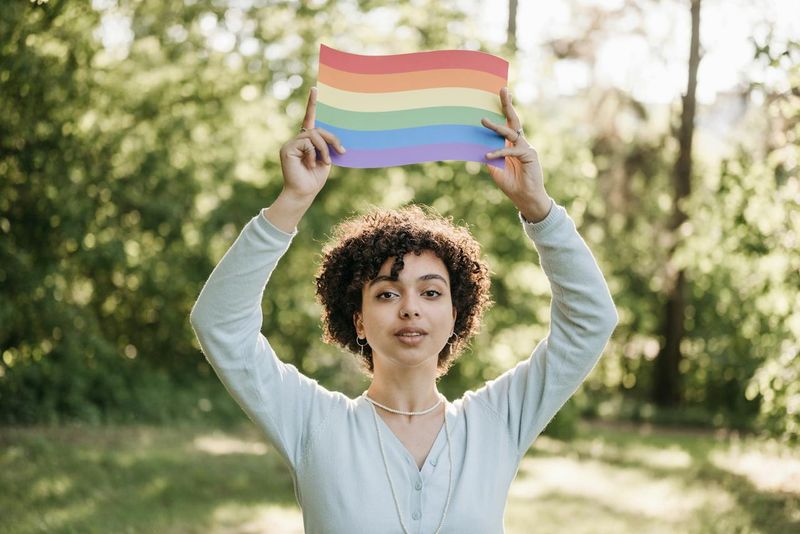In the world of gender and sexual diversity, LGBTQ flags are more than just cloth and colour. They are profound symbols, each fold and hue telling a story of identity, struggle, and triumph. The LGBTQ+ community, a vibrant mosaic of individuals each with their own unique experiences and narratives, has adopted various flags over the years. These flags do more than symbolise sexual and gender identities; they are emblems of pride, unity, and the ongoing fight for recognition and equality.
The most universally recognized among these is the rainbow pride LGBTQ flag, a beacon of diversity and inclusivity. However, the LGBTQ+ community is not a monolith, and as such, it has birthed a variety of LGBTQ flags, each representing different sexualities, gender identities, and experiences. From the well-known rainbow LGBTQ flag to less familiar ones, each flag serves as a rallying point for members of the community, offering visibility and a sense of belonging.
Understanding these LGBTQ flags, their colours, and what they stand for is not just an exercise in memorization. It's an exploration into the heart of the LGBTQ+ community, a journey through its struggles and celebrations. As society strives towards inclusivity and understanding, recognising and respecting these symbols becomes paramount. This comprehensive guide aims not just to inform, but to enlighten - to peel back layers of colour and reveal the rich histories and meanings behind every LGBTQ flag.
These are some of the LGBTQ flags you should know about
Rainbow Pride Flag

The most iconic symbol of LGBTQ+ pride, the rainbow LGBTQ flag, was created by Gilbert Baker in 1978. Originally featuring eight colours, each with its meaning - from life (red) to spirit (violet) — the flag has evolved. The most common variant now displays six stripes, omitting pink and turquoise. This flag is a universal symbol of the LGBTQ+ community's diversity and inclusivity.
Bisexual Pride Flag

Designed by Michael Page in 1998, the bisexual pride LGBTQ flag features three stripes: pink at the top representing same-sex attraction, blue at the bottom for heterosexual attraction, and an overlapping purple stripe in the middle symbolising attraction to both sexes. This flag aims to increase visibility for the bisexual community and acknowledge the challenges of bi-erasure.
Transgender Pride Flag
Created in 1999 by Monica Helms, the transgender pride flag comprises two blue, two pink, and one white stripes. The blue and pink represent traditional male and female genders, while the white stripe stands for those who are non-binary, genderqueer, or undergoing transition. It’s a powerful emblem of the struggle for recognition and rights within the transgender community.
Lesbian Pride Flag
There are several variations of the lesbian pride flag, but the most commonly accepted version today features seven different shades of pink, white, and orange. It evolved from an earlier version that included a kiss mark, signifying the unique identity and experiences of lesbian women.
Asexual Pride Flag
Unveiled in 2010, the asexual pride flag consists of four horizontal stripes: black representing asexuality, grey for demisexuality and the grey-ace spectrum, white symbolising non-asexual partners and allies, and purple, which stands for community. This LGBTQ flag highlights the diverse spectrum of asexual identities.
Pansexual Pride Flag
Adopted in 2010, the pansexual pride flag features three horizontal stripes: pink for attraction to females, yellow representing attraction to non-binary and genderqueer people, and blue for attraction to males. This LGBTQ flag underscores the pansexual community's breadth of attraction beyond the traditional gender binary.
Non-Binary Pride Flag
Introduced in 2014, the non-binary pride flag is composed of four horizontal stripes: yellow for genders outside the binary, white representing multiple or all genders, purple for the blending of male and female, and black symbolising those who identify as lacking gender.
Each flag within the LGBTQ+ community is more than just a colourful banner; it's a profound emblem of identity, struggle, and solidarity. Understanding the history and meaning behind these flags fosters a deeper appreciation of the diversity and complexity of the LGBTQ+ experience. In flying these LGBTQ flags, the community not only celebrates its identity but also educates and invites others to learn and support the ongoing journey towards acceptance and equality.


